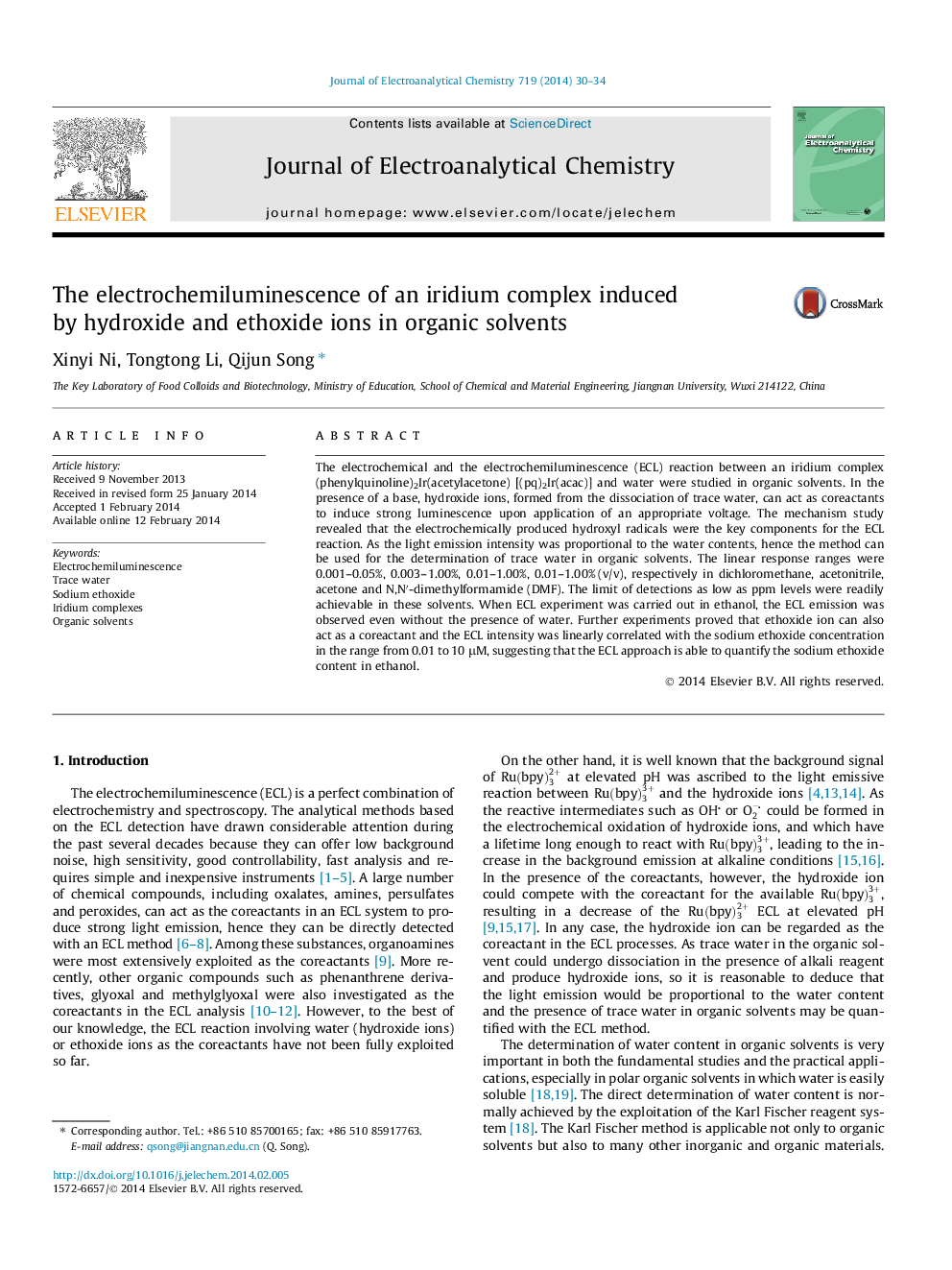| Article ID | Journal | Published Year | Pages | File Type |
|---|---|---|---|---|
| 218902 | Journal of Electroanalytical Chemistry | 2014 | 5 Pages |
•The hydroxide and ethoxide ions can act as the coreactant in an iridium complex ECL system.•The relevent ECL mechanism was proposed for the first time.•A new method for the quantification of water content in organic solvents is reported.•The results could inspire the further study on the ECL of other alkoxide compounds in organic solvents.
The electrochemical and the electrochemiluminescence (ECL) reaction between an iridium complex (phenylquinoline)2Ir(acetylacetone) [(pq)2Ir(acac)] and water were studied in organic solvents. In the presence of a base, hydroxide ions, formed from the dissociation of trace water, can act as coreactants to induce strong luminescence upon application of an appropriate voltage. The mechanism study revealed that the electrochemically produced hydroxyl radicals were the key components for the ECL reaction. As the light emission intensity was proportional to the water contents, hence the method can be used for the determination of trace water in organic solvents. The linear response ranges were 0.001–0.05%, 0.003–1.00%, 0.01–1.00%, 0.01–1.00% (v/v), respectively in dichloromethane, acetonitrile, acetone and N,N′-dimethylformamide (DMF). The limit of detections as low as ppm levels were readily achievable in these solvents. When ECL experiment was carried out in ethanol, the ECL emission was observed even without the presence of water. Further experiments proved that ethoxide ion can also act as a coreactant and the ECL intensity was linearly correlated with the sodium ethoxide concentration in the range from 0.01 to 10 μM, suggesting that the ECL approach is able to quantify the sodium ethoxide content in ethanol.
